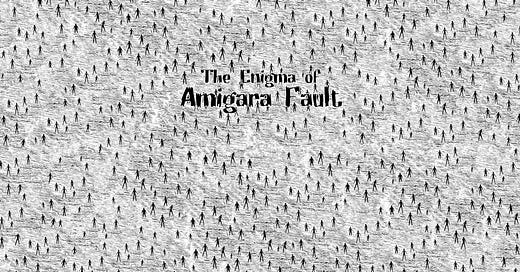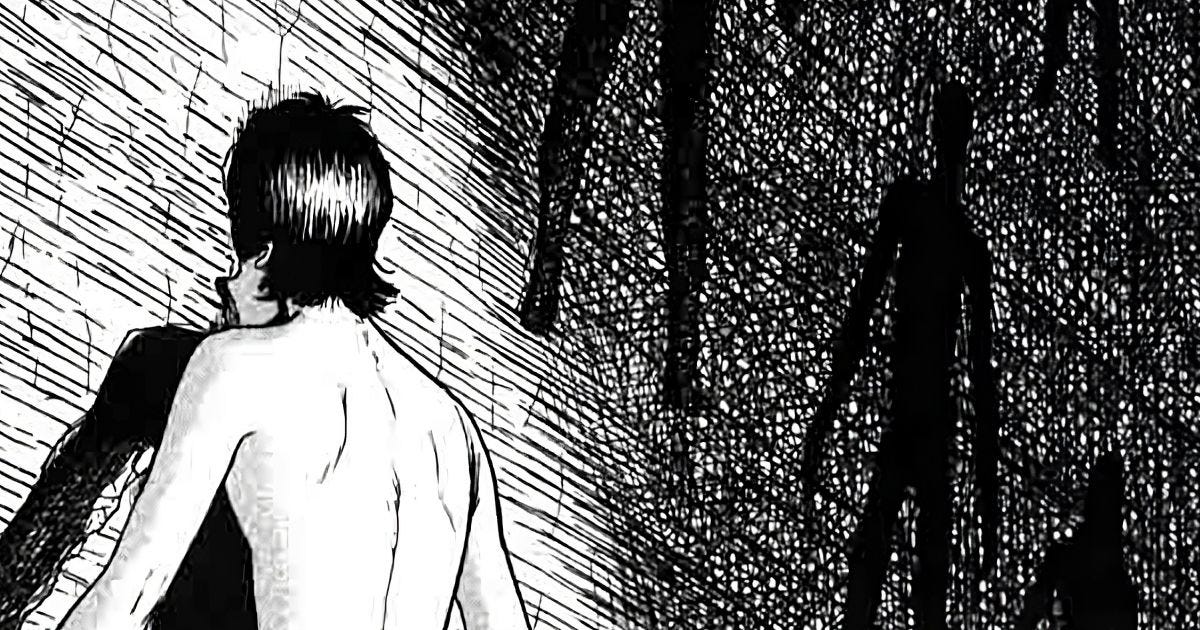Before reading "The Enigma of Amigara Fault," I never imagined a story without monsters or bloodshed could be so terrifying and burrow so deeply into my mind. This short manga by Japanese horror master Junji Ito speaks to something primal within us, using (seemingly) simple storytelling and imagery to uncover our darkest compulsions. What makes us walk willingly toward our own destruction? Why do we feel drawn to something that will ruin us? These questions can be quite haunting.
The story begins with an earthquake striking an unnamed prefecture in Japan, revealing a strange fault on Amigara Mountain. The exposed rock contains countless human-shaped holes. People from across Japan flock to see this geological anomaly, among them two hikers named Owaki and Yoshida who meet on their journey to the mountain.
What begins as curiosity quickly transforms into horror. Some visitors discover holes that match their silhouettes perfectly, as if made specifically for them thousands of years before their birth. One man, Nakagaki, becomes the first to enter his hole, stripping down and disappearing into the darkness despite warnings. Others soon follow, overcome by an inexplicable compulsion that overrides their fear and reason.
The holes call to their matches with a voice that cannot be heard but must be obeyed. As Yoshida tells Owaki after finding her own hole, it was "made for me" and despite her terror, she feels its pull. This compulsion forms the psychological backbone of the story.
This reminds me of what psychologists call "the call of the void" or “death drive”— that strange impulse some feel standing at great heights to jump, despite having no desire to die. In Ito's story, this impulse becomes a physical reality. The mountain offers each person their perfect silhouette, and something ancient within them must accept this invitation.
The genius of Ito's horror (in most of his stories) lies in its restraint. He never explains why the holes exist or who created them. The ambiguity makes the story stronger. Like the characters, we search for meaning in this strange phenomenon and find none.
What happens to those who step into their holes? Junji Ito leaves us with more questions than answers, and I will do the same here. The story hints at a fate that is both terrifying and strangely inevitable, but I will not spoil what lies within the mountain’s darkness, you should discover that for yourselves.
What I will talk about is how we all know this feeling in smaller ways. Sometimes we are drawn toward choices or habits that do not serve us, but we follow them anyway. We find ourselves narrowing our own possibilities, even when we know better. The story’s horror is not only in the fate of its characters, but in the recognition that we, too, might answer a call we do not understand.
Junji Ito manages to tap into something essential about human nature. We are beings who search for meaning, who long to fit perfectly somewhere, even if it means losing ourselves in the process. I believe this is Ito’s best story because it’s not just about horror but honesty: a mirror held up to our own impulses and fears, asking us to consider what shapes us and what we risk when we try too hard to fit.






